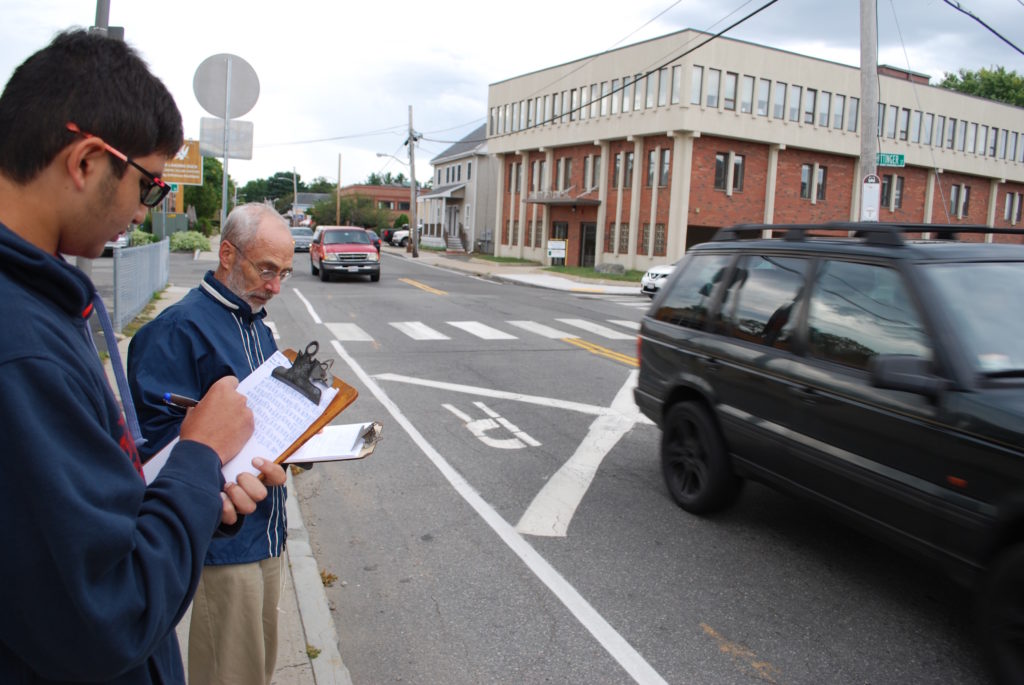
Aryan Mehrotra, left, and Sumner Brown spent 16 summer mornings and evenings counting traffic that flowed into and out of Belmont.
Everyone Is Someone Else’s Cut-Through Traffic
by Aryan Mehrotra, with Sumner Brown
Watching drivers trying to get through the railroad underpass at Belmont Center is unnerving, especially when someone who apparently did not learn to take turns in kindergarten starts swearing.
Belmont’s traffic seems to be getting worse. Where does it come from and where is it going? How much traffic cuts through Belmont? On weekday mornings, traffic backs up from Belmont Center to the top of Belmont Hill, snagged by the three places where cars cross or pass under the railroad tracks.
Cut-through = Congestion
Many people in Belmont blame cut-through traffic for our congestion. As a research project, we decided to investigate the amount of cut-through, and we believe it accounts for about 70% of our traffic at rush hours.
Feel free to hate traffic congestion. But try to understand cut-through drivers.
Before describing how we estimated cut-through traffic, we have to acknowledge a fact. Our economic society depends on public roads. Unless you never drive outside Belmont, everyone is someone else’s cut-through traffic. Also, the boundary of Belmont is an historic accident. If we lived in a larger town (perhaps a combination of Belmont, Arlington, Cambridge, and Watertown), our cut-through traffic would be much less, but traffic congestion would be exactly the same. Feel free to hate traffic congestion. But try to understand cut-through drivers.
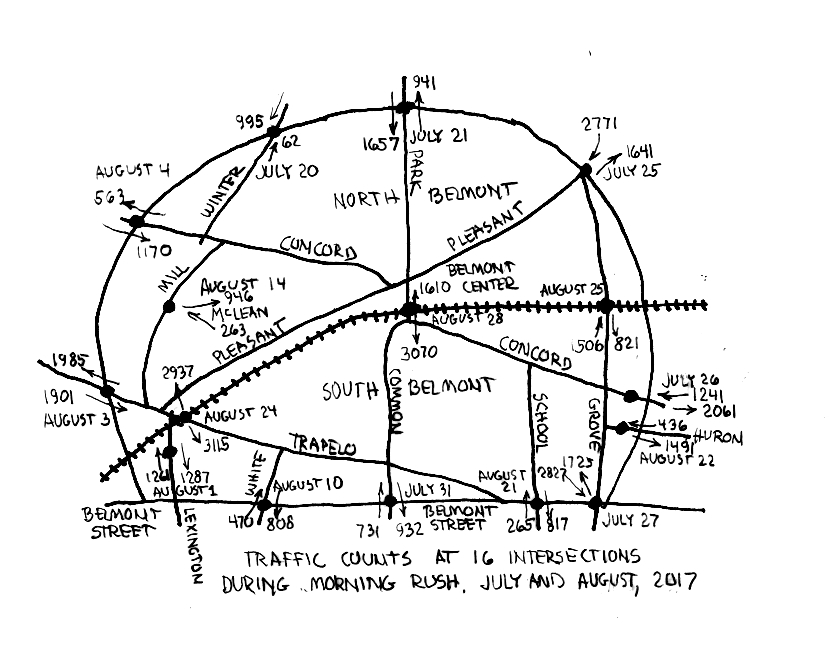
Figure 1. The black dots signify the 16 locations where Mehrotra and Brown counted vehicles. The numbers indicate the volume of and direction of cars in and out of those locations.
Counting Method 1
We counted traffic at 16 intersections on 16 different days. We did not count traffic at every boundary intersection. The boundary with Watertown has dozens of entry points since we share Belmont Street with Watertown. Also, we collected data during the summer when we were available and traffic was lighter than in the fall, winter, and spring.
Figure 1 shows an overview of where and when we collected data and the gross vehicle counts for 16 intersections marked by 16 black dots. You can see that morning traffic moves through Belmont predominantly from north and west to south and southeast. Also notice that traffic can cross the railroad tracks at only three places in Belmont. The tracks concentrate motor vehicles so congestion follows, not necessarily exactly at the tracks, but at roads that lead to and from the rail crossings.
Counting Method 2
Our second method was to use the Belmont police log of traffic problems, such as, “A Toyota driven by a Cambridge man hit a Ford driven by a Belmont woman which in turn damaged a Buick driven by a Watertown man.” We read 70 traffic incident reports from 2016 and 2017 that mentioned 194 Belmont drivers and 473 non-Belmont drivers. Superficially this suggests that 71% of drivers are cutting through Belmont, but we have no idea how many out-of-town drivers were in Belmont to shop, visit, or work.
Counting Method 3
A third estimation involved taking license plate numbers from cars going south under the Belmont Center railroad bridge between 8:15 and 8:30 AM. To run the license plates, we approached the Belmont Police Department. They helped us because we only needed to know how many cars were registered in Belmont, and they could make further use of our study to examine traffic policies. Of 90 plates, 70 were from out of town and 20 were from Belmont. This suggests that 78% of cars are from out of town. However, this is a small sample, and we do not know how many of the out-of-town vehicles were coming to a Belmont destination.
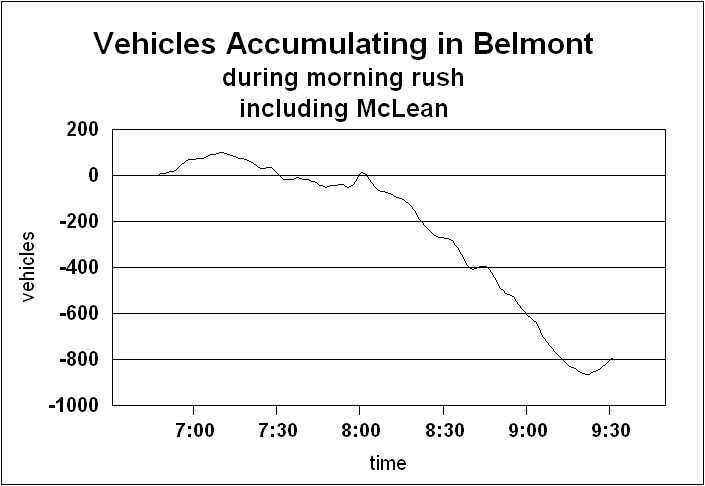
Figure 2. The total amount of cars traveling in town during morning rush hour.
Counting Method 4
Our fourth method was to follow cars that entered Belmont. If the cars left Belmont without parking, they were cut-through. We successfully followed 13 cars, nine of which were cut-through. We tried to follow more. Following cars through Belmont is unpleasant and dangerous. Our sample size is too small to give a credible estimate.
We chose the Clifton and Pleasant Street intersection to decide the length of morning rush hour. We defined morning rush (which emerged as 6:43–9:33 AM) as starting when a car has to wait for more than one light cycle to pass the signal and ending when a car can pass a signal in only one light cycle.
We measured traffic coming in and out of Belmont at 16 locations, including where traffic crosses the railroad tracks, and traffic coming into and out of town from the north and south. One can often learn a great deal about an area by studying what happens at the boundaries.
Figure 2 (above) shows the vehicles accumulating in Belmont during morning rush. The most remarkable thing about these data is not obvious until compared with the total vehicles that entered and left town, shown in Figure 3 (below). For the first hour, the vehicles entering and leaving are nearly the same and the accumulation in Belmont stays close to zero. Only when Belmont people start leaving for work at a faster rate than people who come to work in town does Belmont lose cars, but the cars lost are only about 5% of the total cars that leave.
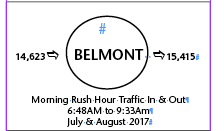
Figure 3. Despite all the cut-through traffic, more cars leave Belmont daily than enter. The difference is Belmont residents driving out.
Figure 2 hints at a remarkable characteristic of Belmont morning rush traffic. For most of the intersections we observed, the traffic was close to constant for most of the morning rush. That is, Belmont’s roads are close to capacity for the entire time. (See Figure 4 (page 9), the traffic under the center railroad bridge, as an example of an intersection at capacity for nearly two hours.)
Belmontians Go Elsewhere Too
During morning weekday traffic in July and August, a total of 14,623 cars entered Belmont through various roads and a total of 15,415 cars exited Belmont. The difference is Belmont residents leaving, presumably for work. The majority of cars that enter Belmont from the north enter through Park Avenue. Cars enter from the east from Concord Avenue and Pleasant Street. From the west they enter through Concord Avenue, Trapelo Road, and Winter Street. From the south, most cars enter through Lexington Street and Grove Street. For many locations where we collected data, each street always had either more cars exiting or more cars entering.
Streets With The Biggest Difference
According to our data, the roads that have the greatest difference between cars entering and exiting are Winter Street, Concord Avenue (west), and Pleasant Street. More cars enter Belmont through these streets than any of the other streets at which we collected data. Some streets had the opposite, with more cars exiting than entering: Common Street, Concord Avenue (east), School Street, and Huron Avenue.
The roads used for entering Belmont are connected to Arlington, Route 2, and Lexington. To get to places such as Cambridge or Watertown while avoiding traffic on Route 2, going through Belmont is the most sensible path. The roads used for exiting Belmont connect mostly to Cambridge, Watertown, and Waltham.
We also collected data to examine the flow of traffic within Belmont at three places where the railroad goes through Belmont: at Brighton Street, the bridge at Belmont Center, and at Trapelo Road in Waverley Square. At all three crossings more cars were going south towards Watertown, Cambridge, and Waltham. The most popular spot is the bridge at Belmont Center with 3,373 cars passing through in about three hours. Trapelo Road was second with 1,954, and Brighton Street had 1,726.
The number of cars going north at Belmont Center was 1,768 cars, with 1,777 at Trapelo Road, and 889 at Brighton Street. Again, we must mention that since these data were taken during the summer vacation, fewer cars are on the road than on a school morning. When we collected data on Brighton Street, traffic was flowing relatively smoothly and had to stop only when a train was passing. On a school morning, however, the traffic moves significantly slower, often backed up from the signal on Concord Avenue to the gas station on Pleasant Street.
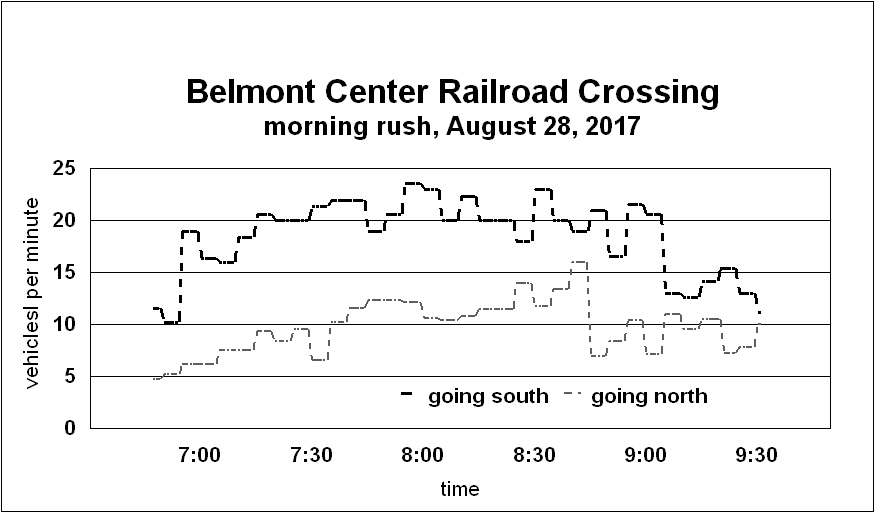
Figure 4. The number of vehicles crossing under the railroad bridge on Leonard Street in Belmont Center.
Even though the majority of the cars that enter Belmont are cut-through, some come to Belmont for work. McLean Hospital, one of the largest employers in town, accounts for a sizable portion of traffic. Close to 800 cars enter McLean during the morning rush. About 290 cars leave the hospital during the morning rush (most likely the night shift).
I hope that people will ask themselves before they select homes and sites for new offices about the commuting consequences. Google recently considered a site for a new campus in Waltham and asked potential employees what would make the site attractive. The answer was a site where they could commute by bicycle. Google settled in Cambridge. This gives me hope.
Aryan Mehrotra, a junior at Belmont High School, is an intern at Belmont Citizens Forum working with Sumner Brown, a BCF board member.
Bonus Online Content
A Strange Morning at McLean
by Sumner Brown
I thought I was onto something when two security guards approached me as I was counting traffic going in and out of McLean Hospital. They told me I was making someone uncomfortable. I said, “I’m sorry,” and kept counting. Ten minutes later, a Belmont police car stopped beside me. The police are my friends. I talked to the officer about our project. Aryan Mehrotra and I were counting traffic to better understand Belmont’s traffic problem. I explained that to estimate the amount of cut-through traffic, it helps to know how many people come to work in Belmont. The officer had seen me and Aryan Mehrotra, my mentee, counting traffic elsewhere. The officer wanted to know one thing: was I working for the town? Apparently McLean has a concern about McLean traffic and Belmont authorities.
You can learn a lot by counting traffic.
The McLean tell was an unexpected extra. We wanted an overview of town traffic, with more analytic details than “It’s terrible.”
Twenty years ago McLean was in financial trouble. They replaced health care managers with business managers who looked at the undeveloped land they owned and saw money. There were plans to build an assisted-living center and a research and development building. The Belmont Citizens Forum and the town were alarmed. One result was a memorandum of agreement between McLean and the town concerning traffic, dated November 22, 1999. This MoA called for monitoring of McLean traffic and reporting of the traffic levels to Belmont by McLean, and traffic mitigation requirements if certain thresholds of traffic were exceeded. Everyone expected that the senior living and R&D facilities would be built. The traffic monitoring was to begin only when they were built. They have not yet been built. So perhaps someone at McLean saw me counting traffic and could not remember what was in the MoA.
While the requirements of the memorandum do not take effect until the senior living and R&D buildings are built, one of the traffic level thresholds was apparently being exceeded during the morning rush on August 14 of this year. While the observed traffic was well above the MoA threshold, some of what I counted was Woodlands traffic, so there is uncertainty. While this is level of traffic is not actionable now, it could cause problems for McLean some day.


Sorry, the comment form is closed at this time.